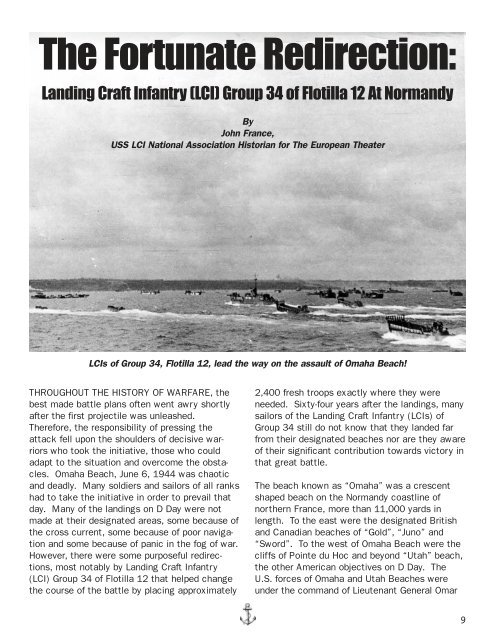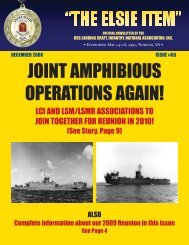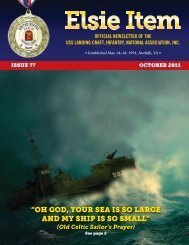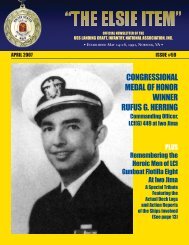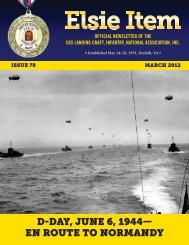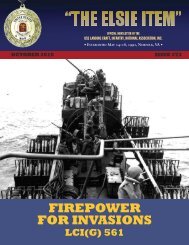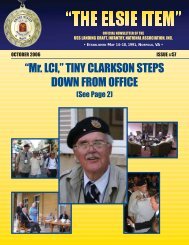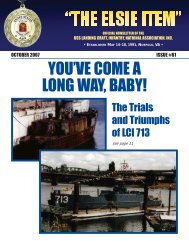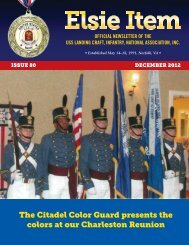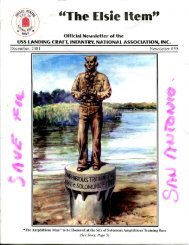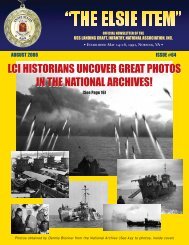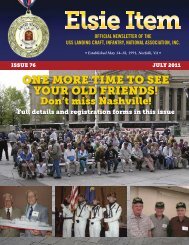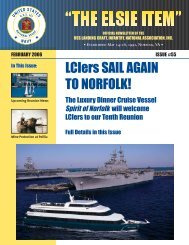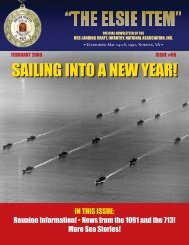elsie item issue 67 - USS Landing Craft Infantry National Association
elsie item issue 67 - USS Landing Craft Infantry National Association
elsie item issue 67 - USS Landing Craft Infantry National Association
- No tags were found...
Create successful ePaper yourself
Turn your PDF publications into a flip-book with our unique Google optimized e-Paper software.
The Fortunate Redirection:<strong>Landing</strong> <strong>Craft</strong> <strong>Infantry</strong> (LCI) Group 34 of Flotilla 12 At NormandyByJohn France,<strong>USS</strong> LCI <strong>National</strong> <strong>Association</strong> Historian for The European TheaterLCIs of Group 34, Flotilla 12, lead the way on the assault of Omaha Beach!THROUGHOUT THE HISTORY OF WARFARE, thebest made battle plans often went awry shortlyafter the first projectile was unleashed.Therefore, the responsibility of pressing theattack fell upon the shoulders of decisive warriorswho took the initiative, those who couldadapt to the situation and overcome the obstacles.Omaha Beach, June 6, 1944 was chaoticand deadly. Many soldiers and sailors of all rankshad to take the initiative in order to prevail thatday. Many of the landings on D Day were notmade at their designated areas, some because ofthe cross current, some because of poor navigationand some because of panic in the fog of war.However, there were some purposeful redirections,most notably by <strong>Landing</strong> <strong>Craft</strong> <strong>Infantry</strong>(LCI) Group 34 of Flotilla 12 that helped changethe course of the battle by placing approximately2,400 fresh troops exactly where they wereneeded. Sixty-four years after the landings, manysailors of the <strong>Landing</strong> <strong>Craft</strong> <strong>Infantry</strong> (LCIs) ofGroup 34 still do not know that they landed farfrom their designated beaches nor are they awareof their significant contribution towards victory inthat great battle.The beach known as “Omaha” was a crescentshaped beach on the Normandy coastline ofnorthern France, more than 11,000 yards inlength. To the east were the designated Britishand Canadian beaches of “Gold”, “Juno” and“Sword”. To the west of Omaha Beach were thecliffs of Pointe du Hoc and beyond “Utah” beach,the other American objectives on D Day. TheU.S. forces of Omaha and Utah Beaches wereunder the command of Lieutenant General Omar9


